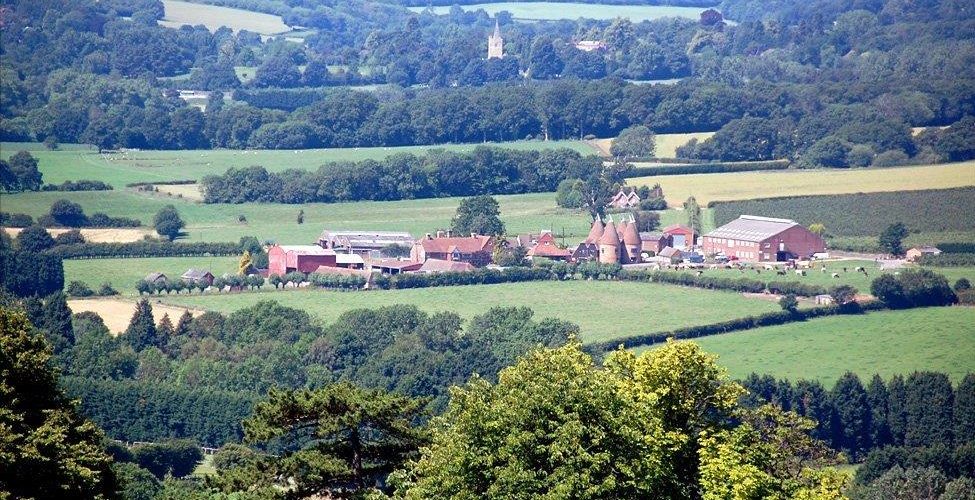
ACTIVITIES & PLACES OF INTEREST
NEAR SPELMONDEN FARM
THE HISTORY OF
HOPPERS’ HUTS AND HOPPING
AT SPELMONDEN FARM
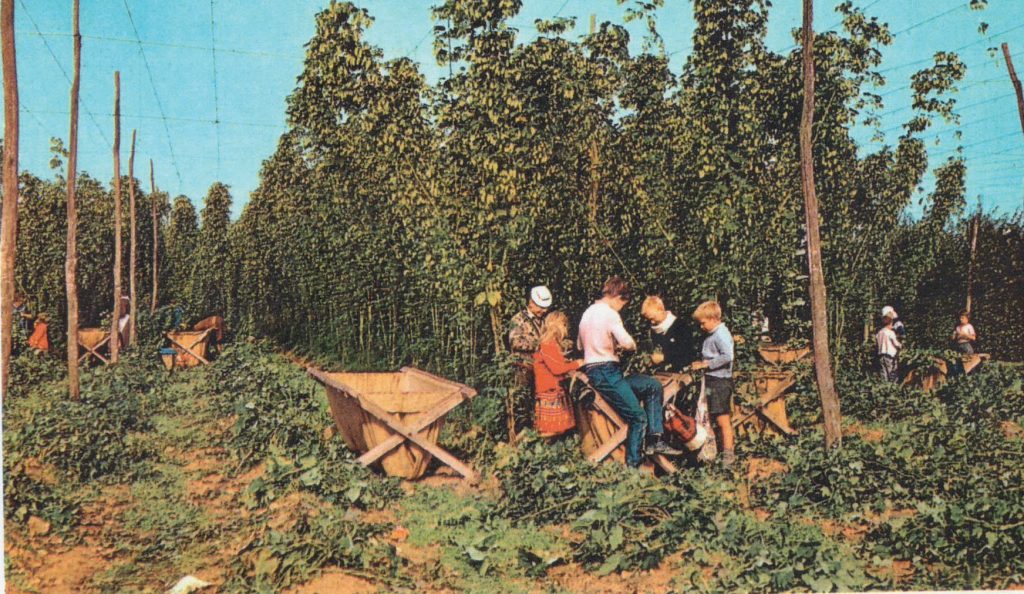
Spelmonden Farm has been owned by the same family since 1932. It is situated within an Area of Outstanding Natural Beauty in the High Weald. The farmstead lies within a hollow with rising ground to the north and flat land extending south to the River Teise. The present group of farm buildings are highly characteristic of farmsteads within the Weald. The main farmhouse is Grade II* listed and the nearby farm buildings are curtilage listed. Spelmonden Farm steading dates back to the Fifteenth Century, or possible earlier. The original house was a fine example of a timber frame Wea Iden Hall House built in at least two phases and then altered again between the Seventeenth and Nineteenth Centuries. Spelmonden was the principal manor of Horsmonden. The oast house is Grade II listed and would have been used to dry all the hops, and in more recent years has been converted to office use. They were one of the largest hop growers in the UK during the 1970’s, B0’s and 90’s. The farm has traditionally been a mixed farm with hops, fruit and livestock. Hops were finally stopped growing on the farm in 2002.
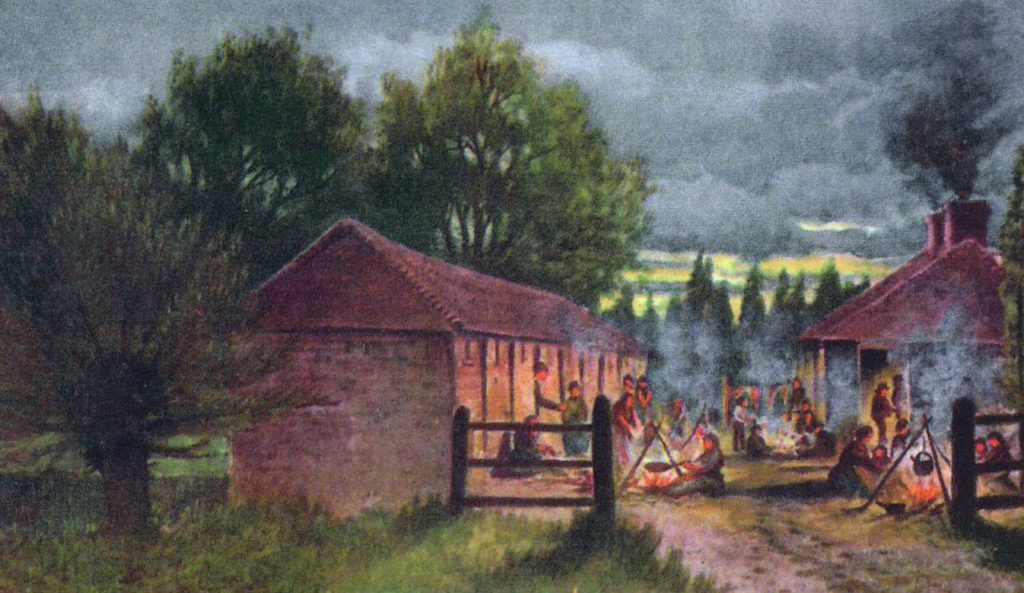
Since then, the farm has been used for grazing of livestock, arable crops and fruit production. The more traditional farm buildings, which are no longer suitable for modern agriculture, have been converted into alternative uses, including offices, business units, holiday lets and residential dwellings. Spelmonden farmstead is an example of a hamlet of buildings with a varied history that are still all in the same family ownership, and provide a diverse mix of residential, commercial and tourism uses to ensure that the buildings are maintained for many more years. All the hop gardens have since been removed. There are several remaining hopper huts on the farm. The three nearby are the older, original hopper huts that probably date back to the early 1900’s. One of these was used as the cook house and the other two were used for sleeping accommodation. The picking of hops was performed by both local people, and people who came from London who were provided with accommodation which consisted of one room.
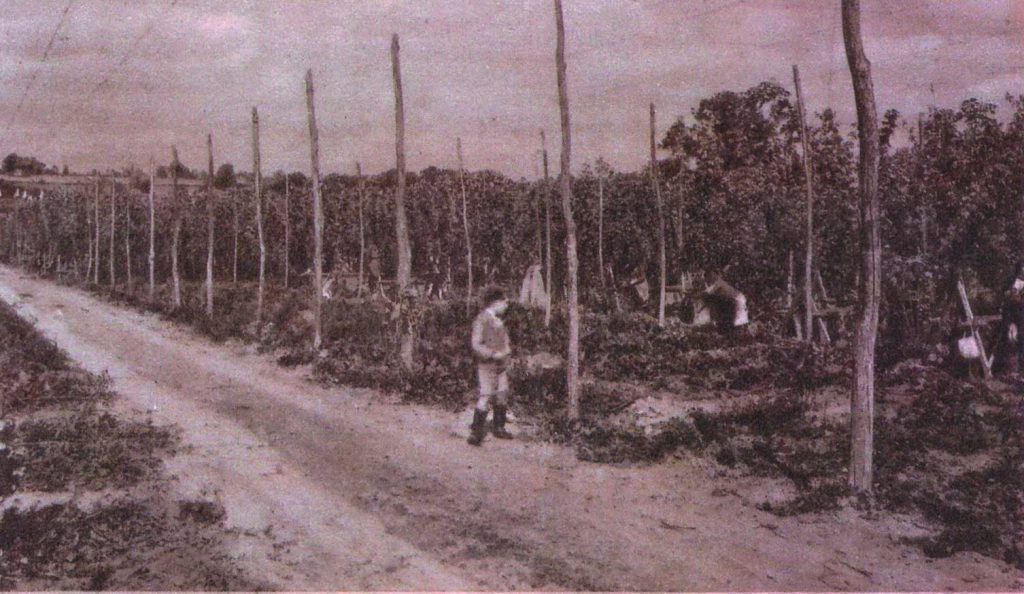
It was generally regarded as a holiday for the Londoners, but also an opportunity to earn enough money to fit out children with clothes for the winter. The pickers picked all day and the emptying and measuring was performed twice a day by the farmer, once around lunchtime and again at the end of the day. He would measure the hops out with a bushel basket, and the tally would then be recorded on the picker’s card. The pickers were paid by the number of bushels picked. The hops were then transported in pokes on a cart to the oast house. Once they had been unloaded, they were spread evenly over a slatted floor where they would be dried for 12 hours. They were then raked out of the kiln into the cooling room. The dried hops were then pressed into a pocket which was a thick hessian sack about 8 feet long by 2½ feet in diameter, once full it weighed 1 ½ hundred weight. Hop growing has declined dramatically over the past two or three decades, and the methods of picking and drying have changed. Now the hop bines are cut down and carted by tractor and trailer. Powerful oil burners are used for drying as they generate more heat. There are still a few local hop growers in Kent.
PADDOCK WOOD TO HAWKHURST
BRANCH RAILWAY LINE
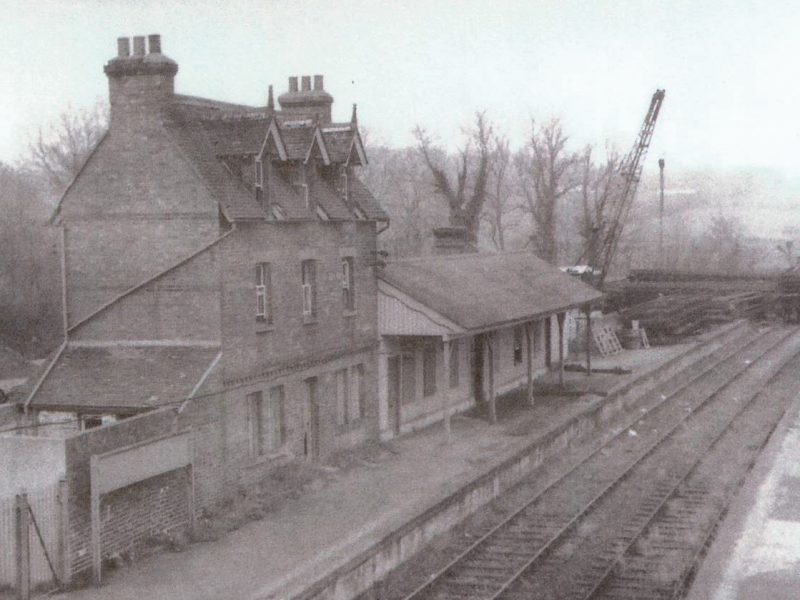
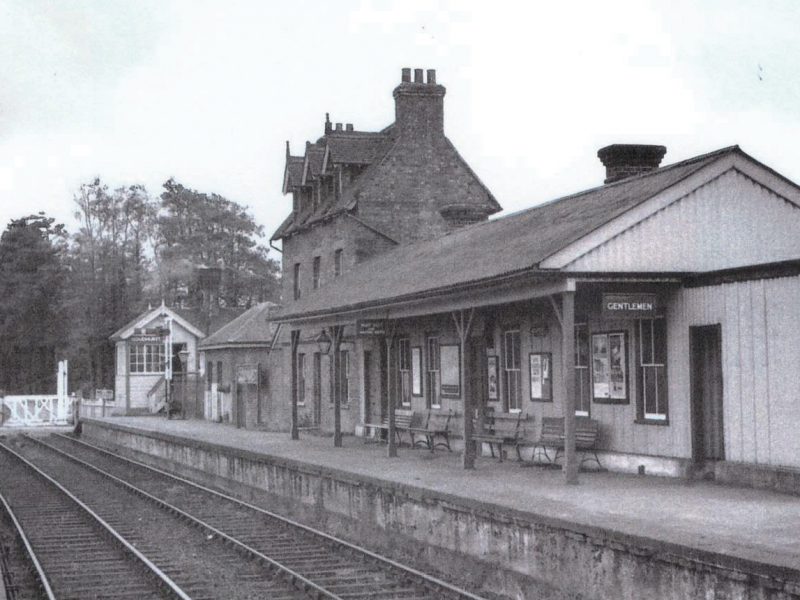
The former Paddock Wood to Hawkhurst Branch Railway Line was opened in 1892 and a unique feature of the line was its service to the hop growers along the route. The railway line would have provided access for hop pickers from London to come to Spelmonden Farm. They would have alighted at the nearby Goudhurst Station, which has since been demolished, but used to be opposite the Green Cross Inn on the other side of the River Teise. The railway line was decommissioned in the 19601s and the majority of it has now been dismantled. The original branch line was constructed by the Cranbrook and Paddock Wood Railway with the support of the Southern Eastern Rail Company. Due to its association with the hop picking industry and produce it became known as “The Hop Pickers Line”.
The route of the Paddock Wood to Hawkhurst Branch Line commenced at Paddock Wood station which then wended its way across the Kent countryside in a south-easterly direction towards Horsmonden. It then headed south towards Goudhurst, although it was actually some distance to the west of the actual village of Goudhurst. It then meandered across fields and forest towards Cranbrook station, which is actually located at Hartley and then again the line turned south towards Hawkhurst where it only got as far as Gills Green. After decommissioning in the early 19601s, the lines were removed in 1964 and the stations and other assets were sold off in 1967. Some of the old stations have been turned into dwellings or commercial properties, and the former railway cottages and level crossing cottages have all become private dwellings. The route of the railway line has been relatively well-preserved with particularly well-preserved stretches to the north of Horsmonden near to Swigs Hole Farm and also the stretch by Cranbrook station where part of the platform survives. There are tunnels at Badgers Oak and Horsmonden which are also well preserved.
Proposals for a railway line through the High Weald had been made as early as 1844. This was originally for a railway line from Cranbrook to Marden, but this did not materialise due to financial issues. The Cranbrook and Paddock Wood Railway was formed by a number of dignitaries and notaries, including the High Sheriff of Kent, who then gained parliamentary approval to proceed with the construction of the railway. This began in the spring of 1880. However, this proved to be a false start, and eventually construction of the line began in 1890. It was estimated that 400 navvies were employed in building the line with a total cost of £100,000. The line was officially opened in October 1892 between Paddock Wood and Goudhurst with the remaining line to Gills Green/ Hawkhurst being completed a year later.
Recent Comments